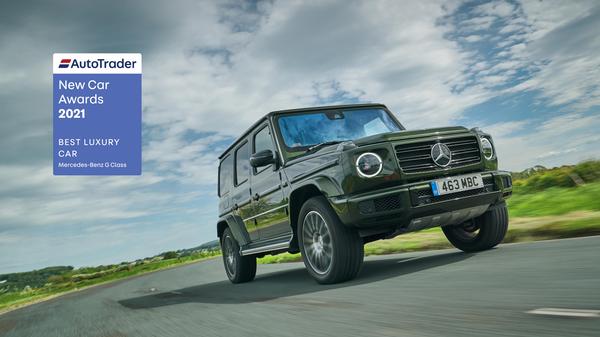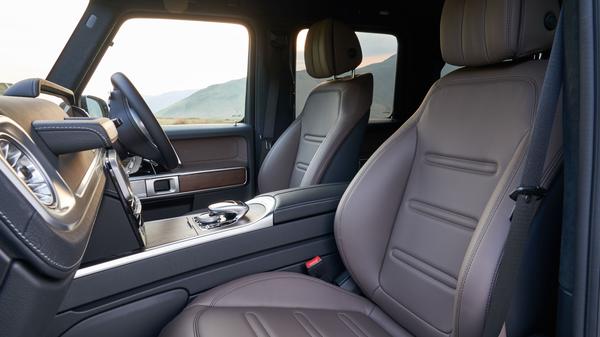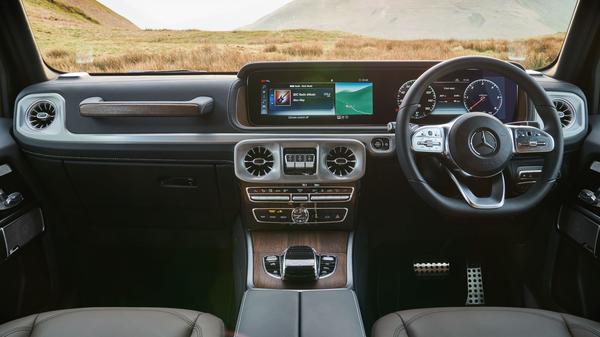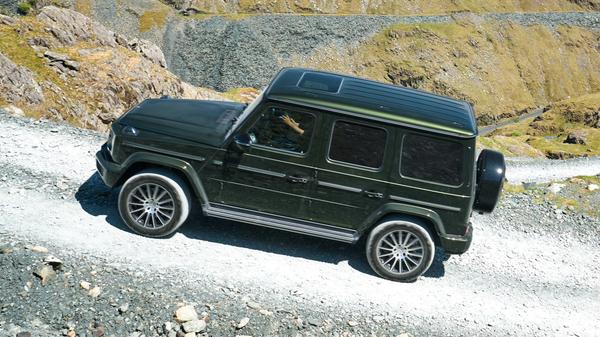The G-Class is marketed as a
luxury off-roader, but in past versions, the cabin hasn’t really lived up to that.
There were several places where you could see evidence of the car’s workhorse roots, making it feel a little too rough-and-ready to deliver on the high-end promise, and for that matter, to justify the high-end price.
The latest G-Class puts that right in impressive style. The cabin is exquisitely trimmed with plush materials and soft leather, and you’ve also got the same pair of digital screens as you find in the in the
E-Class and
S-Class for your infotainment and instruments. Not only is it all nice and easy to use, it also gives the whole cabin a cutting-edge, widescreen feel.
What’s more, the driving position and steering column have bags of electric adjustment, and the fact you’re so high up gives you a bird’s eye view of the road ahead. Getting to your seat takes some physicality, though, because you have to climb up into it rather than drop down like you do with a more conventional car.
Meanwhile, the G-Class’s flat-sided design, along with the raised indicator pods on the front wings, give you a really clear idea of where the extremities of the car are when you’re manoeuvring, which is very handy with a car of this size. The big windows all round help with visibility, although it is impeded slightly by the rear-mounted spare wheel covering part of the back window.
Look at the sheer size of the G-Class, and you’d think there’d be acres of space inside it for occupants to stretch out, but that’s not quite the case. That said, there’s more than enough headroom and legroom in the back for large adults, and the wide middle seat and a flatter-than-normal rear floor makes life reasonably comfy when you’re carrying three across the rear bench.
Cabin storage comes courtesy of a deep lidded cubby in the centre console, a decent glovebox and some useful door pockets. The
boot is a good size, too – although it doesn’t seem as vast as the official figure of 667 litres suggests – and it’s a usefully square shape. However, while the side-hinged tailgate looks cool, it can limit your access to the cargo bay in tight parking spaces. At least there’s no load lip to haul heavy items over.
Previous versions of the G-Class have sorely disappointed in terms of their driving experience. While they were unstoppable off-road, they were terrible on it, giving you a bouncy, jittery and unsettled ride and handling that felt unnervingly unstable due to the tall body, pronounced body lean and desperately slow steering.
The latest car, however, has been absolutely transformed thanks to a new chassis and new adaptive suspension. The ride comfort is a lot slicker than before, doing a much better job of isolating you from the effects of potholes and pock marks. At the same time, the suspension is much better at controlling body movements, instantly making the car feel much less top-heavy, and the steering is way quicker and much more direct. It feels nice and weighty, too.
Ultimately, the G-Glass still doesn’t have the same level of handling precision or comfort as other fast
SUVs like the
Range Rover Sport SVR and
Porsche Cayenne Turbo S, no matter how much you play with the driving modes. Importantly, though, it no longer feels like it’s decades behind the rest, and buyers no longer have to sacrifice every ounce of dynamic capability in their pursuit of style.
The G is still fairly unstoppable off-road, too, with three differential locks, low-range gears and a host of other trickery design to haul you out of the sticky stuff. Ground clearance and wading depth have also been improved.





















